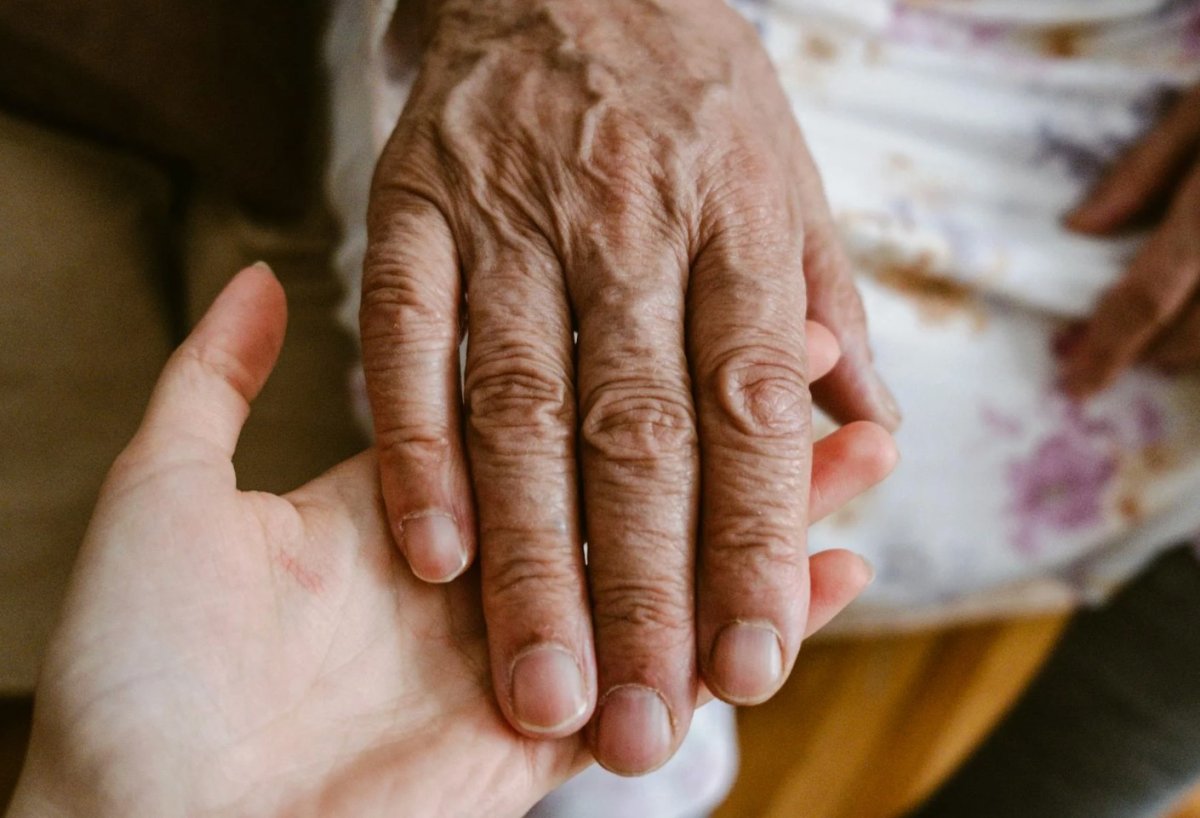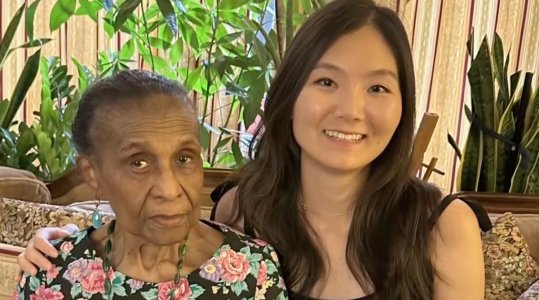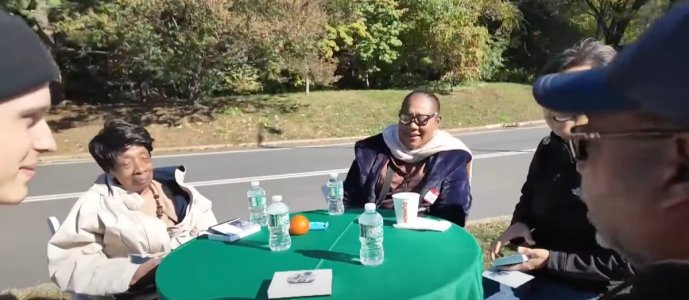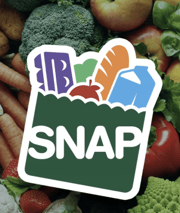
It's a statistic that stops you in your tracks: 29% of older adults said they felt isolated some of the time or often in 2024. That's nearly one in three of older adults feeling cut off from meaningful connections. But here's what's even more striking—it’s that while those numbers have bounced back to pre-pandemic levels, that baseline was never good to begin with.
The health effects of loneliness are equivalent to smoking 15 cigarettes each day, and loneliness and social isolation increase the risk of dementia by 50%.
These aren't just uncomfortable feelings we need to push through—they're genuine health emergencies hiding in plain sight.
But across New York City, and increasingly around the country, an innovative solution is taking root.
It doesn't involve expensive medications or complex treatments.
Instead, it's built on something beautifully simple: connecting older adults with younger generations through shared stories, meals, and genuine friendship.
When Doctors Prescribe Friendship
Dr. Jennifer Wong has seen firsthand what happens when social connections strengthen the brain.
As an experimental psychologist and interim executive director of the nonprofit Life Story Club, she watches older adults literally come alive during intergenerational gatherings.
"Loneliness and social isolation start to shrink parts of our brain and we know when we shrink parts of our brain—gone forever—can't build up that muscle," Wong explains.
This isn't metaphorical—research tracking more than 5,000 elderly Americans over nine years found that those experiencing social isolation faced a nearly 30% greater risk of developing dementia.
"I'm not as depressed as I was"
The concept of "social prescribing"—where doctors literally prescribe social connections instead of just medications—is gaining traction nationwide.
Wong's patients are often referred because they've registered as depressed, lost a loved one, or seen their social circle shrink.
The prescribed medicine? Regular conversations with people from different generations.
What Does This Mean For You?
Social prescribing means your doctor might recommend specific community activities, volunteer opportunities, or programs like NYC's Friendly Visiting as part of your health plan.
It's treated as seriously as any other medical intervention because the health benefits are just as real.
Also read: Can community really fight loneliness? This quiet experiment offers answers
The Magic of Cross-Generational Connection
When 67-year-old Yvonne Taylor from Harlem was referred to Life Story Club's program, she discovered something unexpected.
During guided storytelling sessions in Brooklyn's Prospect Park, she found herself connecting with much younger volunteers like Nara Garber.
"We talked about personal history, family importance... her grandkids growing up today," Garber recalls.
For Taylor, these conversations became a lifeline: "I love hearing stories about her upbringing, family. It makes you realize we are different, but in some ways we are all the same."
The transformation was measurable. "I'm not as depressed as I was," Taylor says simply.
Also read: Psychologists warn: Don’t ignore these 11 hidden signs of loneliness
A 29-Year-Old Friendship That Defies the Statistics
The city's Friendly Visiting program takes this concept even further, matching homebound seniors with younger volunteers for regular visits.
The results speak for themselves, according to program director Suzanne Windland: "It's amazing the difference it has made for their brain health, physical health, mental health."
Consider 89-year-old Anna Boulet, a cancer survivor who came to New York from Haiti in the 1960s.
Living alone in Queens, she maintains remarkable independence—cooking, cleaning, shopping for herself.
But it's her relationship with her 29-year-old volunteer friend that keeps her sharp and engaged.
"We talk about everything," Boulet says. "We eat together. When she comes, we order Chinese food. She helps me with my computer, cellphone."
The relationship works both ways—Boulet shares decades of wisdom while her young friend provides technological support and companionship.
Did you know?
Did you know?
28% of seniors live alone, totaling more than 14.7 million people—but research shows that living alone doesn't automatically mean feeling lonely. The quality of our social connections matters more than the quantity.

Also read: Inside NYC’s anti-loneliness club: Where seniors find connection and purpose—one story at a time
The Science Behind the Solution
What makes these intergenerational programs so effective? Research suggests it's about more than just having someone to talk to.
When we engage across age groups, we're exercising different parts of our brains—processing new perspectives, adapting to different communication styles, and staying current with changing times.
One in three seniors reported distance from family and friends as the primary cause of their loneliness, and 75% of seniors who have family wish they saw their family more.
Intergenerational programs can't replace family connections, but they can fill critical social gaps while providing something unique—the energy and fresh perspectives that come from connecting across generations.
Also read: Feeling lonely this holiday? Here’s how to feel connected and loved
Finding Programs in Your Community
While NYC's programs get attention for their innovation, similar initiatives are sprouting across the country. The key is knowing where to look:
- Area Agencies on Aging: Nearly every community has one, and they often coordinate or know about local intergenerational programs
- Senior centers: Many are expanding beyond traditional programming to include cross-generational activities
- Libraries: Often host intergenerational book clubs, technology training, and storytelling programs
- Universities: Some partner with local senior communities for mutually beneficial programs
- Faith communities: Many churches, synagogues, and mosques have intergenerational programming
AARP Connect2Affect
The AARP Foundation has created an initiative called Connect2Affect, offering resources to help older adults combat social isolation and loneliness.
Visit connect2affect.org to find local programs, assess your isolation risk, and access tools for building connections.
Also read: How connection and support can strengthen your immune system, new study finds
Starting Your Own Connections
Can't find a formal program in your area? Consider these grassroots approaches:
Skill-sharing circles: Offer to teach something you know well (cooking, crafts, history) to younger community members in exchange for learning something new (technology, current trends, social media).
Volunteer together: Many organizations welcome intergenerational volunteer teams for projects like community gardens, literacy programs, or community service.
Neighborhood networks: Start small by connecting with neighbors of different ages through informal gatherings, walking groups, or shared interests.

Also read:The surprising reason more seniors are feeling lonely—no one’s talking about it
The Ripple Effects
What's particularly beautiful about these programs is how they benefit everyone involved.
Younger participants often report gaining wisdom, perspective, and mentorship they can't find elsewhere.
Older adults get energy, technological help, and fresh viewpoints on modern life.
Anna Boulet's advice captures this perfectly: "Just eat the right food, not too much salt, grease and keep moving. Keep asking questions."
It's wisdom that transcends age—stay curious, stay connected, keep engaging with the world around you.
What This Means For You
The programs in New York City are proving that the antidote to isolation isn't complicated—it's about creating spaces where different generations can genuinely connect.
As our population ages and traditional family structures evolve, these innovative approaches to building community become not just nice-to-have programs, but essential public health interventions.
The loneliness epidemic is real, but so are the solutions. Sometimes the best medicine really is good company, shared stories, and the simple act of asking someone about their day—regardless of the decades between you.
Read next:
- Will senior support programs survive new federal budget changes? Here’s what we know
- No more holiday blues: simple and heartwarming ways to lift your spirits this year
- Seniors swear by these surprising secrets to staying happy alone—Millennials can’t believe what they’ve been missing
Have you experienced the benefits of intergenerational friendship, either as a mentor or mentee? What creative ways have you found to build meaningful connections across age groups in your community?
Primary Source
https://www.cbsnews.com/newyork/new...ife-story-club-nyc-friendly-visiting-program/
Loneliness and isolation: Back to pre-pandemic levels, but still high, for older adults
Cited text: Similarly, 29% of older adults said they felt isolated some of the time or often in 2024, just above the rate of 27% seen in 2018.
Excerpt: 29% of older adults said they felt isolated some of the time or often in 2024
https://ihpi.umich.edu/news-events/...k-pre-pandemic-levels-still-high-older-adults
Elderly Loneliness Statistics (2025): Social Isolation Effects
Cited text: The health effects of loneliness are equivalent to smoking 15 cigarettes each day.
Excerpt: The health effects of loneliness are equivalent to smoking 15 cigarettes each day
https://www.consumeraffairs.com/health/elderly-loneliness-statistics.html
Elderly Loneliness Statistics (2025): Social Isolation Effects
Cited text: Loneliness and social isolation increase the risk of dementia by 50%.
Excerpt: loneliness and social isolation increase the risk of dementia by 50%
https://www.consumeraffairs.com/health/elderly-loneliness-statistics.html
For Healthy Aging, Stay Connected | Hopkins Bloomberg Public Health Magazine
Cited text: In a 2022 study of dementia, Cudjoe and colleagues tracked more than 5,000 elderly Americans over the course of nine years, and found that those exper...
Excerpt: research tracking more than 5,000 elderly Americans over nine years found that those experiencing social isolation faced a nearly 30% greater risk of developing dementia
https://magazine.publichealth.jhu.edu/2024/healthy-aging-stay-connected
Elderly Loneliness Statistics (2025): Social Isolation Effects
Cited text: 28% of seniors live alone, totaling more than 14.7 million people (5 million men and 9.7 million women).
Excerpt: 28% of seniors live alone, totaling more than 14.7 million people
https://www.consumeraffairs.com/health/elderly-loneliness-statistics.html
Loneliness in Seniors Statistics (2024): Combating Social Isolation
Cited text: One in three seniors reported distance from family and friends as the primary cause of their loneliness.
Excerpt: One in three seniors reported distance from family and friends as the primary cause of their loneliness
https://www.medicarefaq.com/blog/senior-loneliness-statistics/
Loneliness in Seniors Statistics (2024): Combating Social Isolation
Cited text: 75% of seniors who have a family wish they saw their family more, and 66% often feel forgotten about by their family.
Excerpt: 75% of seniors who have a family wish they saw their family more
https://www.medicarefaq.com/blog/senior-loneliness-statistics/
Loneliness and isolation: Back to pre-pandemic levels, but still high, for older adults
Cited text: The AARP Foundation has created an initiative called Connect2Affect, offering resources to help older adults combat social isolation and loneliness fo...
Excerpt: The AARP Foundation has created an initiative called Connect2Affect, offering resources to help older adults combat social isolation and loneliness
https://ihpi.umich.edu/news-events/...k-pre-pandemic-levels-still-high-older-adults






